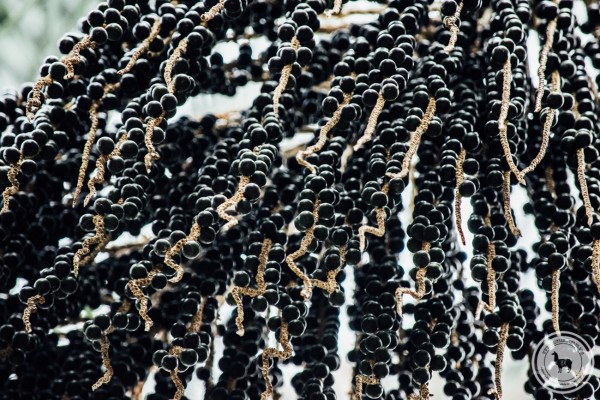From the Jungle to the Kitchen

26 Sep, 2016 | Alexis Galanis
Amazonian Superfoods Are Spicing Up the Menu and Healing the Body
Myriad stalls fill Plaza Avaroa on this bright Thursday morning as vendors look to promote their business on this unique market day for young and growing businesses. As the intense La Paz sun beams down on the streams on passers-by and the air fills with a cacophony of voices and blaring music, I stop to find Marisa Quito setting up her stall surrounded by posters of exotic fruits. Intrigued, I ask her to tell me a bit about her business. She tells me that she travels around Bolivia’s three major commercial cities, La Paz, Santa Cruz and Cochabamba, promoting these Amazonian foods on behalf of Madre Tierra, a company based in Riberalta, at the heart of the Bolivian Amazon. Madre Tierra works with local Amazon communities to collect, produce and commercialize the superfoods that sustain life in Alto Beni.
Açaí
Euterpe precatoria
Acai bowls, smoothies
With the highest content of antioxidants of any known food and packed with fibre, amino acids, essential fatty acids, vitamins and minerals, açaí is the undisputed king of Amazon superfoods. Sourced from palm trees in the local communities of Alto Beni, the pulp of the small purple berry is often described as tasting like a rich blueberry or raspberry with overtones of dark chocolate.
The antioxidants within the berry, anthocyanins, improve heart health, lower cholesterol and increase blood circulation. Among its many other benefits, açaí has remarkable energizing effects, combats ageing, boosts the immune system, helps promote a healthy digestive system and, some claim, increases sexual drive and performance!
Cupuaçu
Theobroma grandiflorum
Juices, ice cream, liquor, baked goods, dairy products, jams
‘Big cacao’ in the tupi language (cupu – cacao, azu – big), cupuaçu’s creamy, white pulp is a kind of crossbreed between pineapple and chocolate. The pulp is rich in protein, calcium, phosphorus and potassium, and it contains pectin, a soluble fibre beneficial for the digestive system. Additionally, butter is extracted from cupuaçu seeds and used in cosmetics to hydrate, repair and protect skin. With the popularity and production scale booming in recent years, cupuaçu has transformed into one the of the main source of economic development in Alto Beni.
Castana Amazonica (Brazil nut)
Bertholletia excelsa
Eaten whole or in a variety of dishes
Despite its name, Bolivia is in fact the world’s greatest producer of the Brazil nut, accounting for around 70 percent of the world’s market. Indeed the production of this unique nut is the economic pillar of life in Alto Beni. While the Brazil nut contains high levels of monounsaturated fatty acids and vitamin E, what sets it apart from its nutty cousins and makes it a verifiable superfood is its unprecedented levels of selenium, an antioxidant which has been shown to reduce the risk of artery disease, liver cirrhosis and certain cancers.
Majo
Oenocarpus bataua
Juices, smoothies, ice cream, jams
The least well-known of our Amazon superfoods, the pulp of majo, from which both oil and majo ‘milk’ (or wine) can be extracted, is rich in fats, protein, amino acids and antioxidants. With a protein content of 7.4 percent, its milk, similar in taste to the pulp of acai, is typically drunk by local communities as an alternative to cow’s milk, while the oil, similar to olive oil, is used both for cooking and in cosmetics due to its high antioxidant content.







